Fingringhoe Wick thriving five years after sea wall breach
- Published
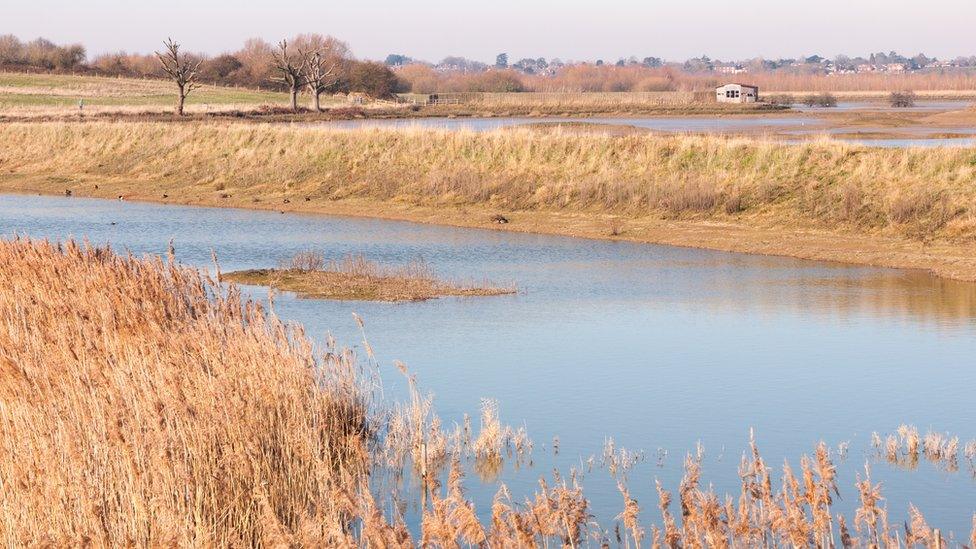
The sea wall breach at Fingringhoe Wick has been hailed a success
A project to deliberately flood part of an Essex nature reserve five years ago has succeeded in boosting numbers of birds and fish, a wildlife trust says.
A 300m (984ft) section of sea wall at Fingringhoe Wick, on the Colne Estuary, was breached in late September 2015.
A fish survey in 2019 identified the presence of thin-lipped grey mullets - which had not been seen there before.
Essex Wildlife Trust's Emily McPartland said: "If you leave a space for nature, nature will quickly reclaim it."
The former gravel pit, near Colchester, became the trust's first nature reserve in 1961, and is home to several different natural habitats and almost 200 species of birds.
At the end of September 2015, the trust and the Environment Agency, external breached part of the sea wall to "let the ocean in" - flooding a 22-hectare area and creating a new intertidal habitat of saltmarsh, mudflats, saline lagoon and reed beds.
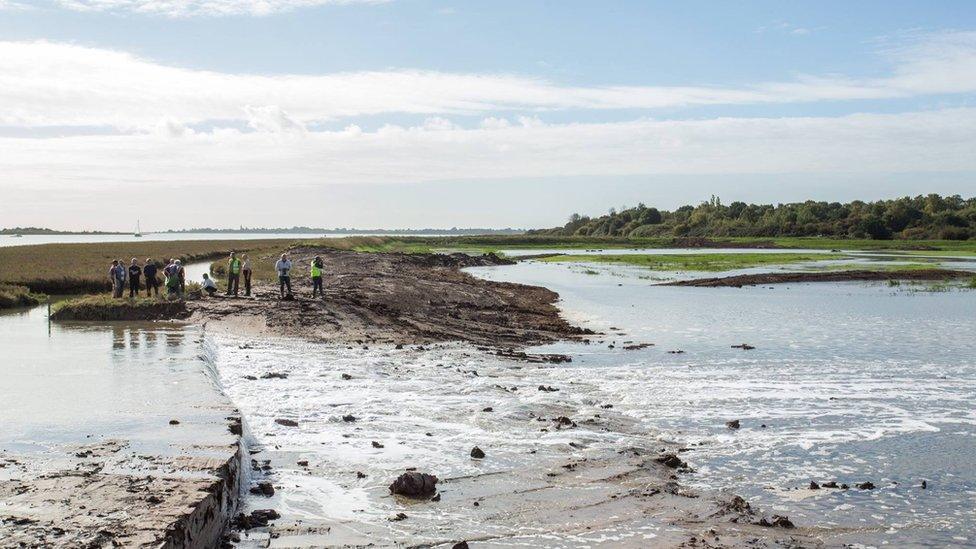
Part of the reserve was deliberately flooded five years ago
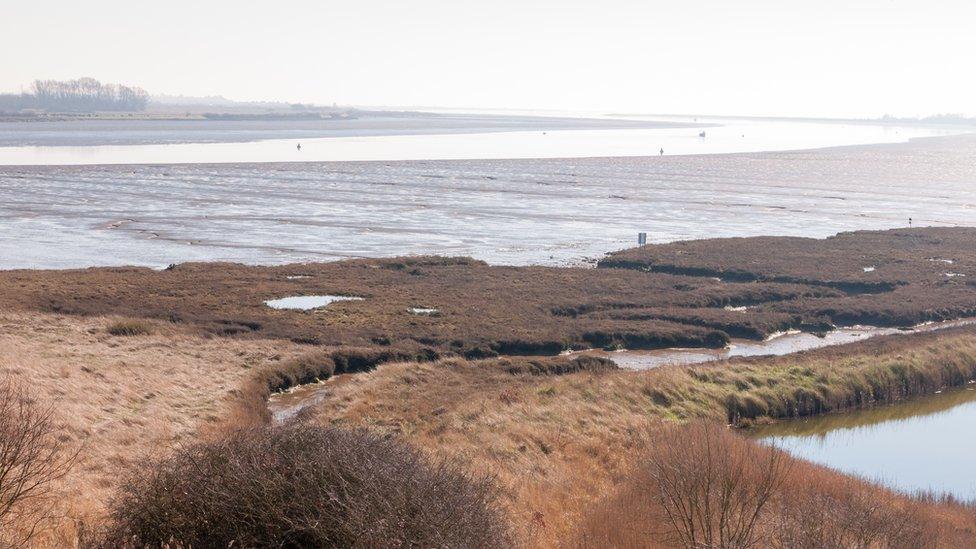
Fingringhoe Wick near Colchester is a haven for birds and fish
Ms McPartland, communications manager for the trust, said the mud and saltmarshes at the 48-acre site were an "oasis" that allowed "Mother Nature to do her thing".
"It is quite remarkable to see how quickly species have adapted - we were seeing the benefits almost immediately.
"Our hopes for the area are being fully realised.
"The islands and mounds created are providing fantastic nesting and roosting sites for flocks of avocets and Brent geese in the winter - and terns and black-tailed godwits in the summer.
"Going forward, it will only get better."
The trust is also involved in a programme to plant rare Sea Hogs Fennel, which is essential in enhancing numbers of Fisher's Estuarine Moth.
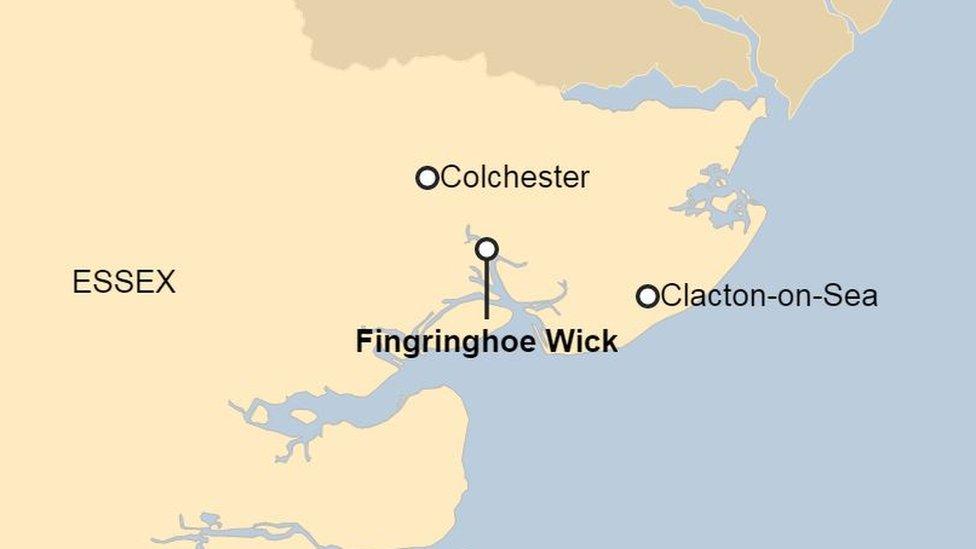
The nature reserve lies on the Colne Estuary in Essex
The site closed for six months during lockdown but visitors can now catch a glimpse of the wildlife at the reserve's bird hide.
Merle Leeds, who managed the project for the Environment Agency, said she was proud to see the site go "from strength to strength".
"The number of species using the site has surpassed expectations and Essex Wildlife Trust has created vantage points that allow you fabulous views across the whole vista," she added.
Around 90% of coastal marshes in the UK have been lost in the last 400 years and others are disappearing because of rising sea levels, according to the Environment Agency.
- Published6 March 2019
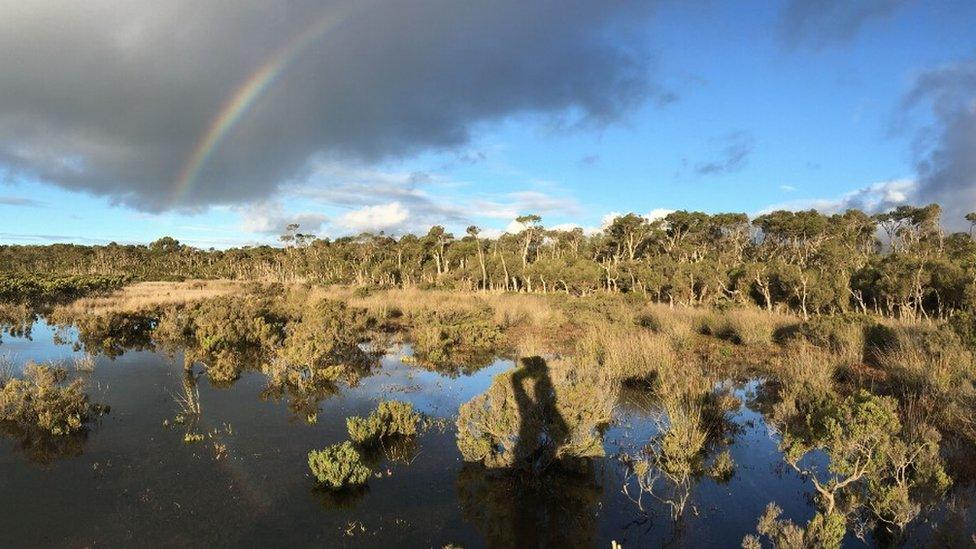
- Published30 September 2015
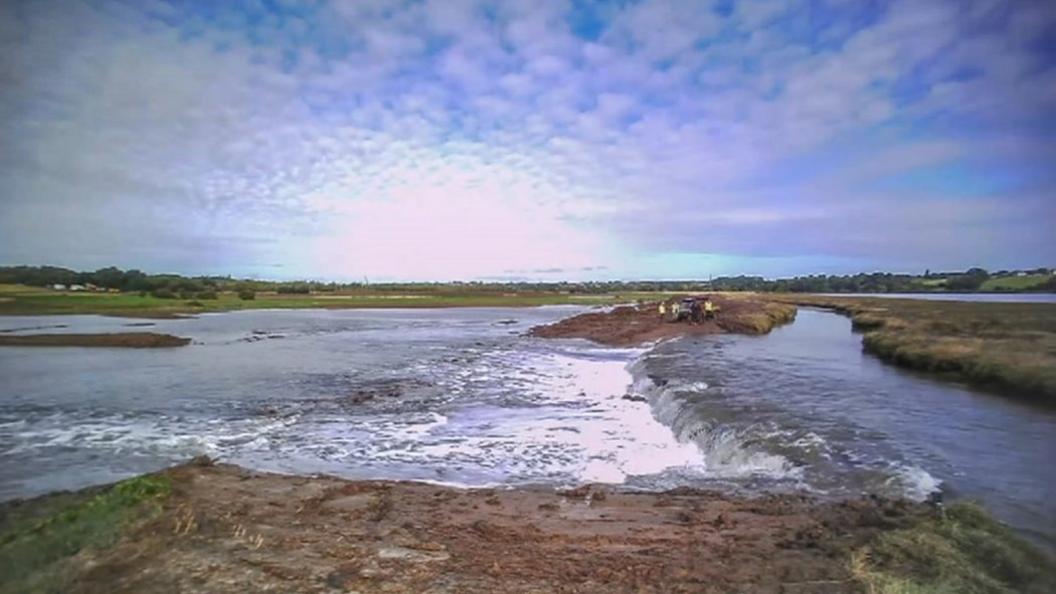
- Published21 August 2013
